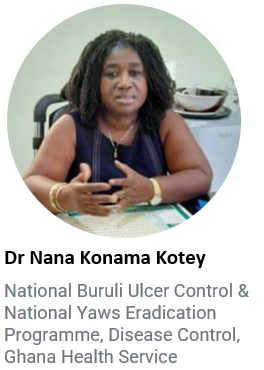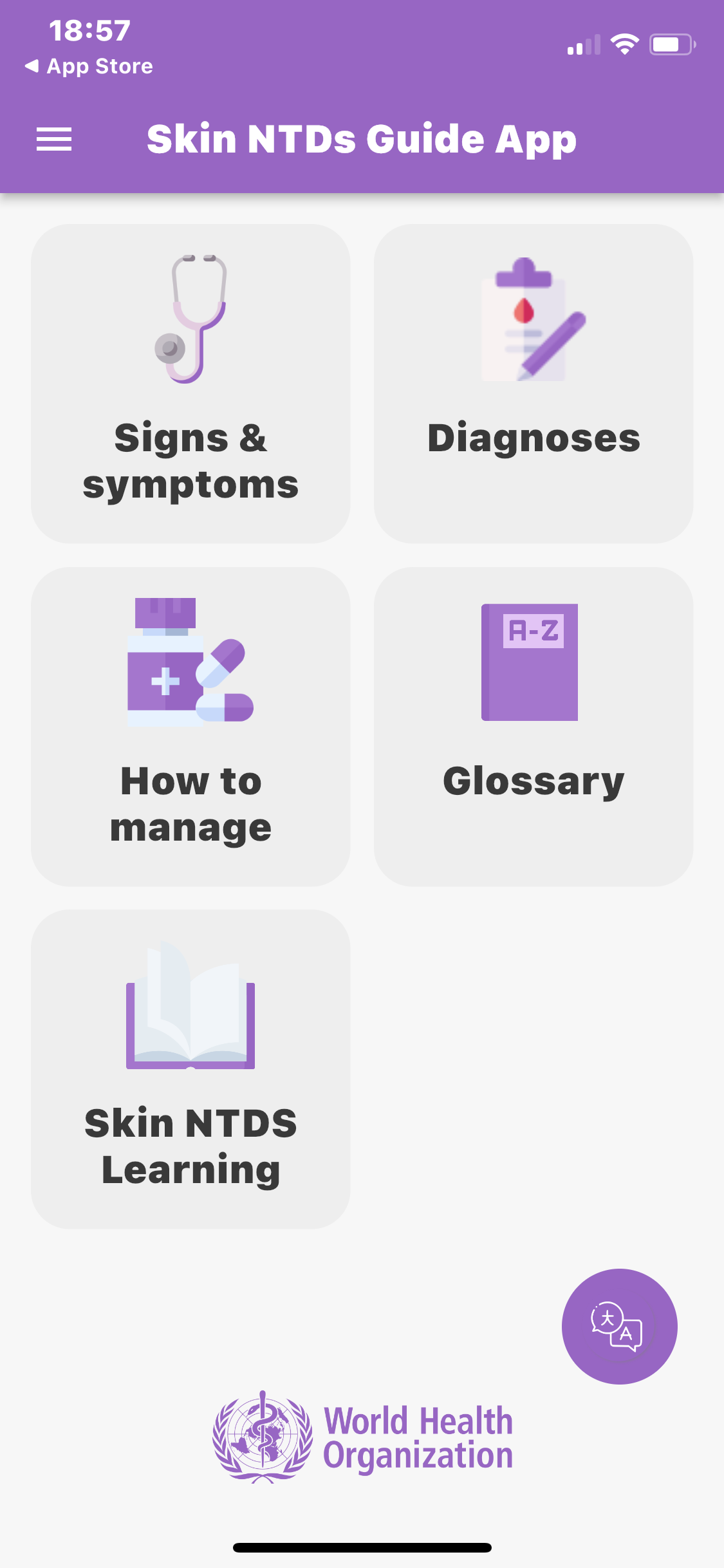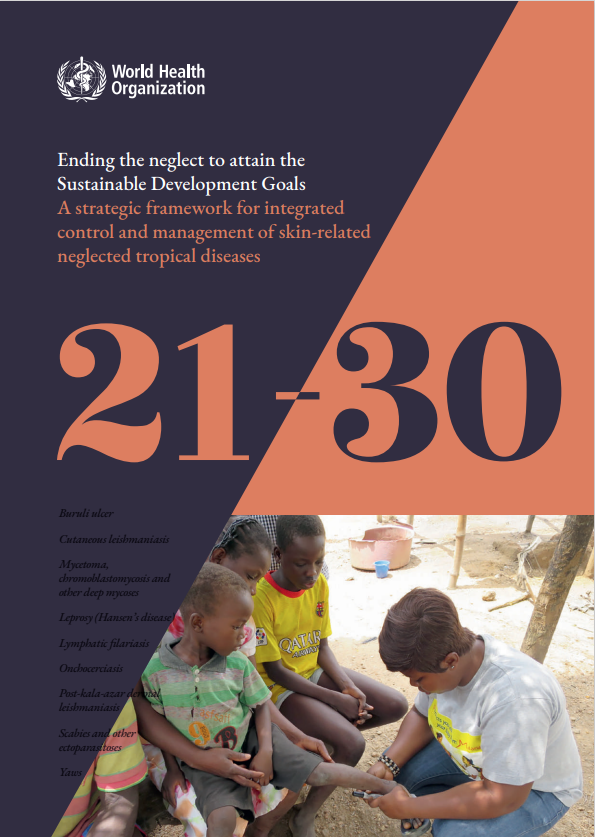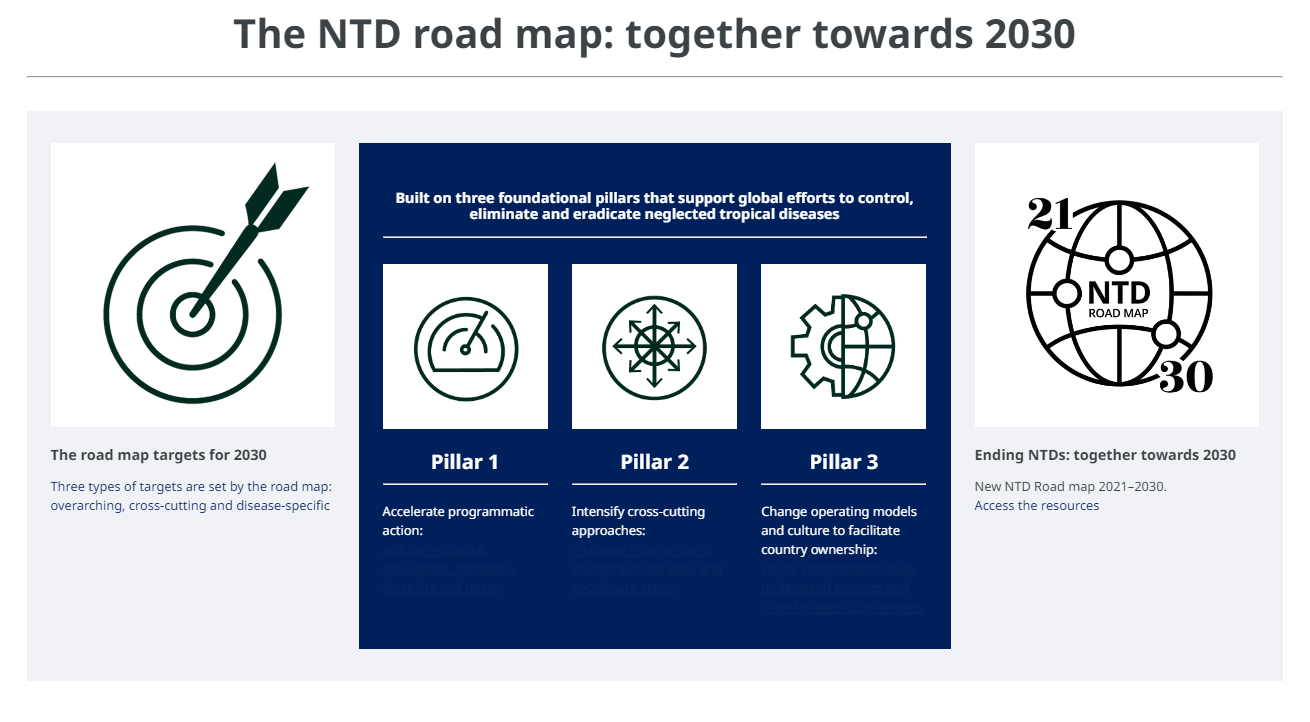
Skin NTD research
Skin NTD research
Neglected Tropical Diseases (NTDs) comprise a group of 20 health conditions which disproportionately affect impoverished communities in tropical and subtropical regions of the globe. More than half of these manifest as skin diseases (skin NTDs).
Skin NTDs include: Buruli ulcer, cutaneous leishmaniasis, post-kala-azar dermal leishmaniasis, leprosy, lymphatic filariasis (lymphoedema and hydrocele), mycetoma (and other deep fungal infections, such as chromoblastomycosis and sporotrichosis), onchocerciasis, scabies and yaws.
Individuals affected by skin NTDs suffer from deformities and/or disability if left untreated. In addition, skin NTDs may lead to loss of education or income, resulting in socioeconomic disadvantage, or psychosocial or social stigmatization. Women and girls are disproportionally affected, suggesting the need for a gender-based approach to tackling skin NTDs.
TDR and the WHO Global Neglected Tropical Diseases (WHO-NTD) Programme work closely with partners in low-resource settings to facilitate improved healthcare services for skin-NTDs.
Our work

Dr Nana Konama Kotey, National Buruli Ulcer Control & National Yaws Eradication Programme, Disease Control, Ghana Health Service
Skin NTDs though the gender lens
A team under the leadership of Dr Nana Konama Kotey from the National Buruli Ulcer Control & Yaws Eradication and National Leprosy Control Programmes in Ghana recently completed a study on gender-related factors affecting access to diagnosis and treatments for skin NTDs. This study showed that gender plays a role in the understanding of skin NTDs and treatment seeking behaviours, indicating a need to improve gender equity in tackling skin diseases in such settings. This work is supported by TDR under the umbrella of the Access and Delivery Partnership (ADP). The results will be published soon.
Digital technology for skin NTDs

New developments in digital technology facilitate opportunities to integrate cost-effective interventions into basic healthcare services in low-resource settings. The WHO Skin NTDs mobile phone App can be used by front-line health care workers to facilitate the recognition of skin NTDs even in potentially harder-to-reach communities.
The National Buruli Ulcer Control & Yaws Eradication and National Leprosy Control Programmes in Ghana set out to assess the feasibility and acceptability of the WHO SkinNTDs App by health care workers and community-based surveillance volunteers in Ghana through a cross-sectional mixed-method pilot study. This work is supported by TDR under the umbrella of the Access and Delivery Partnership (ADP), in close collaboration with the WHO-NTD team. These activities contribute to achieving the WHO-NTD road map goals, such as having guidelines for the management of NTD-related disabilities within national health systems and including NTD interventions in essential health services.
Credits: screenshot of WHO skin NTD mobile phone App in English It is also available in French



